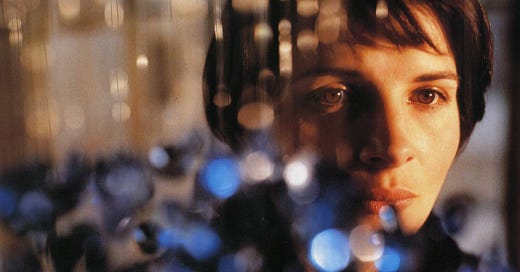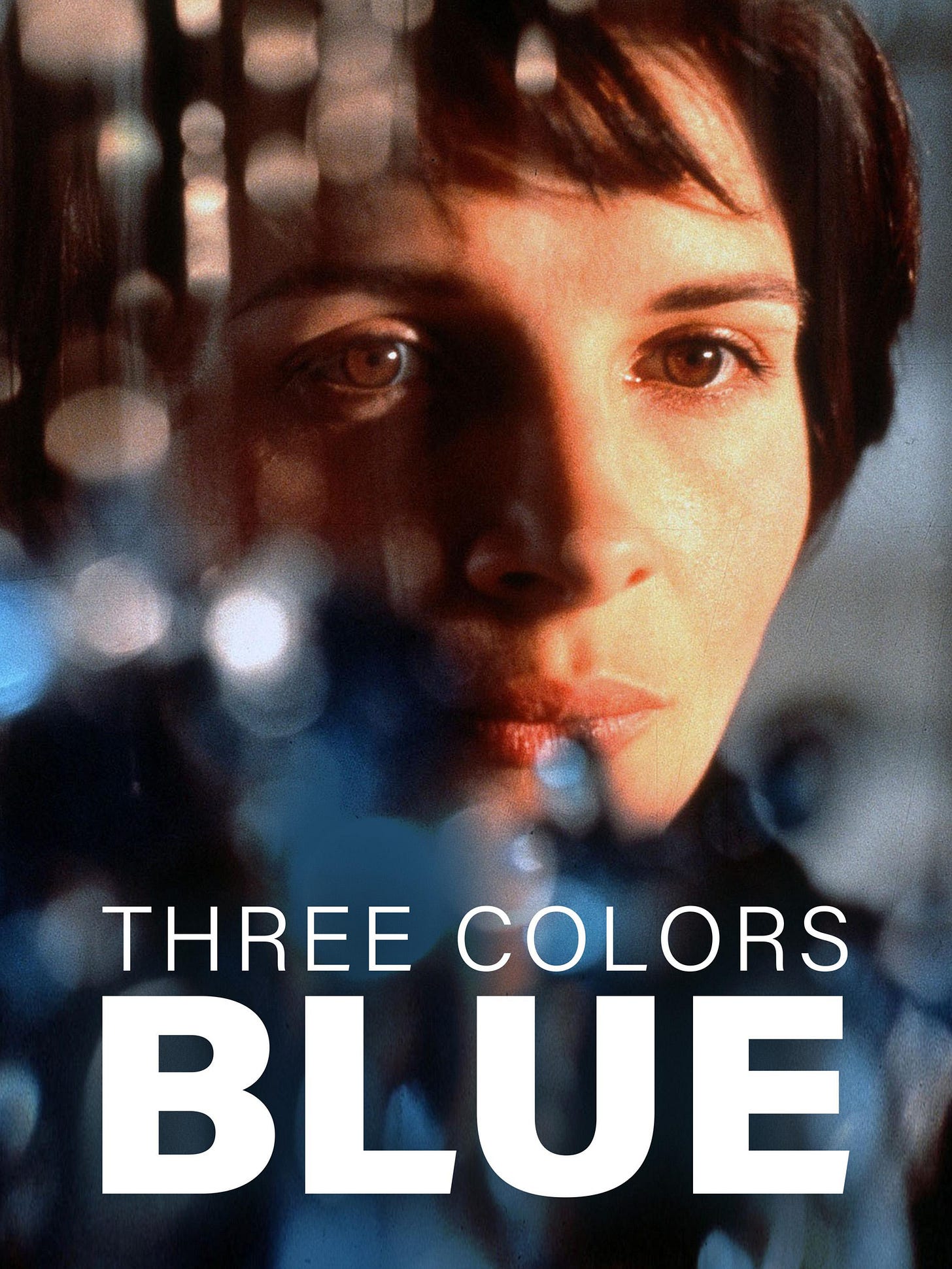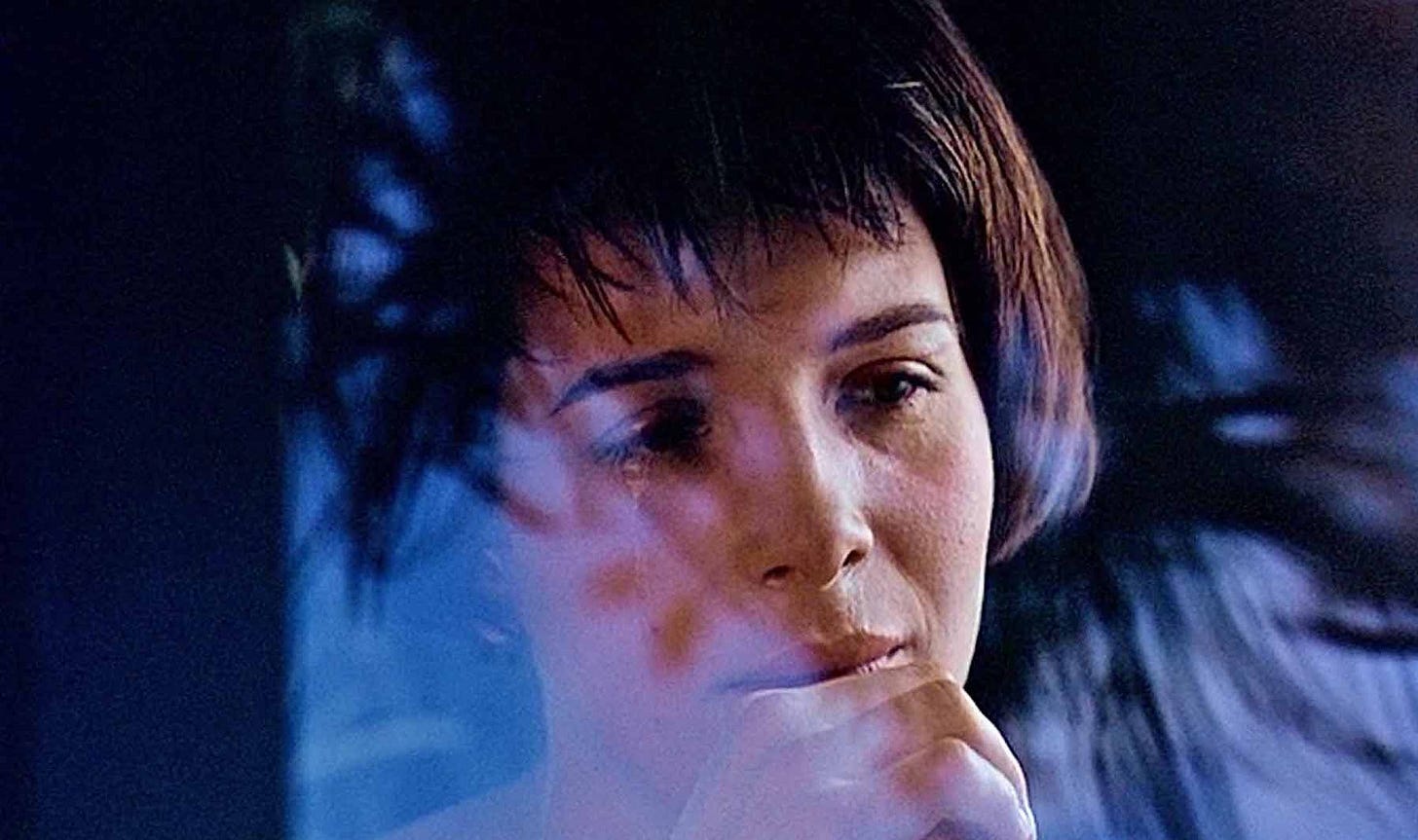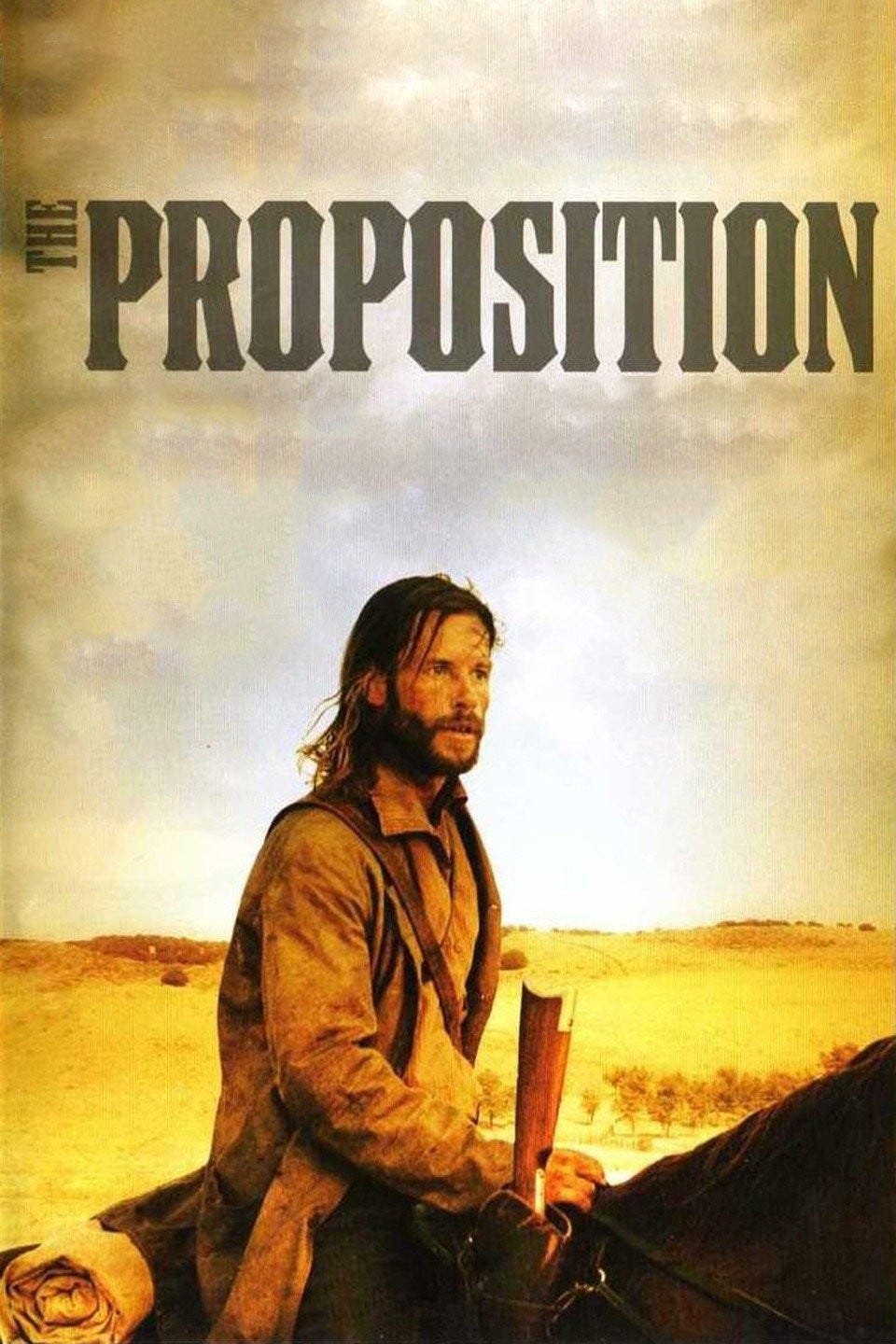Directed by Krzysztof Kieślowski
France & Poland, 1993
1993… the year of Grunge and Doc Martens. Whitney Houston spends what feels like an eternity at the top of the charts with ‘I Will Always Love You’. The Cold War is over. Francis Fukuyama publishes The End of History, and the European Union is born.
In South London the Ritzy Cinema is just a year away from being transformed from a one-screen fleapit – showing arthouse films with a capital A – into a modern multiplex. That year it screened two films titled Blue. The first, Blue by Derek Jarman: an experimental film in which, for 80 minutes, you watch a single unaltered blue frame while the director and his friends reflect on life, mortality, and living with HIV/AIDS. The other was Three Colours: Blue, the first part of a trilogy by the Polish filmmaker, Krzysztof Kieślowski.
Until 1989, Kieślowski’s films had been made under the constraints of the communist regime but this trilogy was a French co-production. The three films are named after the colours of the French flag and explore the original ideals of the French Revolution: liberty, equality, and fraternity.
Blue is a film about liberty, but liberty shadowed by grief. Juliette Binoche plays Julie de Courcy, the sole survivor of a car crash that kills her husband Patrice, a celebrated composer, and their young daughter Anna. Patrice had been commissioned to write a choral anthem for the inauguration of the EU, to be played simultaneously by orchestras in the capitals of twelve founding states.
Contemplating a life without her family Julie reaches for oblivion by breaking into a medicine cabinet and filling her mouth with pills. But she cannot bring herself to swallow them. Consumed by grief she determines to sever all ties with her past – an ironic kind of liberty. She puts the family’s country home on the market, sells their possessions, and says goodbye to their despairing housekeeper.
Julie asks her:
Why are you crying?
The reply:
Because you are not.
The sheet music of Patrice’s unfinished composition goes into a dustbin lorry. A music journalist, writing an obituary, doorsteps Julie and asks a question that hangs in the air: an accomplished composer herself, is it true that Julie was responsible for the music that made her husband famous? The question goes unanswered. Seeking anonymity, Julie rents an apartment in Paris under her maiden name. In a final act of renunciation, she sleeps with her husband's friend and fellow composer Olivier, a man who has for a long time been in love with her. Then she leaves him, saying:
But you see, I'm like any other woman. I sweat. I cough. I have cavities. You won't miss me. I'm sure you realize that now. Shut the door when you leave.
But no, this is Juliette Binoche. Forgettable? Not a chance. Her face is the focus of almost every scene, scenes that are often wordless. It’s a subtle performance that is quietly powerful. Three Colours: Blue is the final of three works recently watched by ReidsonFilm where the camera studies the female face with a striking intensity. The other two – The Passion of Joan of Arc and Jeanne Dielman – differ in style perhaps but in each there is a shared understanding of the face as a locus of both interiority and resistance. The face is not just the subject but the story.
With her newfound freedom, Julie swims, she smokes, and she sits in a café eating ice cream. Living in solitude, however, does come with its own costs. There are moments of genuine terror in Blue. Julie watches from her window as a man is attacked by a gang. He escapes and runs into her apartment block, pounding on doors, crying for help. We wait for the inevitable knock on her door, and when it comes, the banging is at full volume – a genuine jump scare.
Kieślowski was one of cinema’s great visual poets. The film’s imagery is impressionistic with shifting perspectives, Dutch angles, and a frame within frame shooting style. The screen is awash with blue – no, blues: shades that shift with Julie’s emotional state. With his longtime collaborator, composer Zbigniew Preisner, Kieślowski creates a hypnotic fusion of sound and image. Motifs from the unfinished symphony (hers? his?) erupt repeatedly in Julie’s consciousness – thunderous orchestral chords. Each time, the frame fades to black. Are these flashbacks, like traumatic memories?
John Donne, the 17th century cockney poet wrote in one of his meditations:
No man is an island,
Entire of itself
Every man is a piece of the continent
A part of the Main
And just as Julie cannot escape the music playing in her head, she can’t escape her past connections. Olivier manages to track her down. As for the unfinished score? Patrice’s secretary had made a copy and it’s now being discussed on television. Julie watches, and is stunned to learn that Patrice had a mistress – now pregnant with his child. New attachments, new relationships, and Julie begins to re-engage with the world. The film closes with the completed choral anthem playing over a montage of those connections. And the final image? Her face of course – tearful but then we see a trace of a smile. Blue was the colour of Julie’s grief but now it seems to carry the promise of hope.
Krzysztof Kieslowski explains how to shoot a sugar cube:
Reids’ Results (out of 100)
C - 72
T - 77
N - 73
S - 82
Thank you for reading Reids on Film. If you enjoyed our review please share with a friend and do leave a comment.
Coming next… The Proposition(2005)









It would be too much work to attach a note defining C, T, N and S to the ratings form. Of course. Would deprive the motion picture of... reading these review of "something".